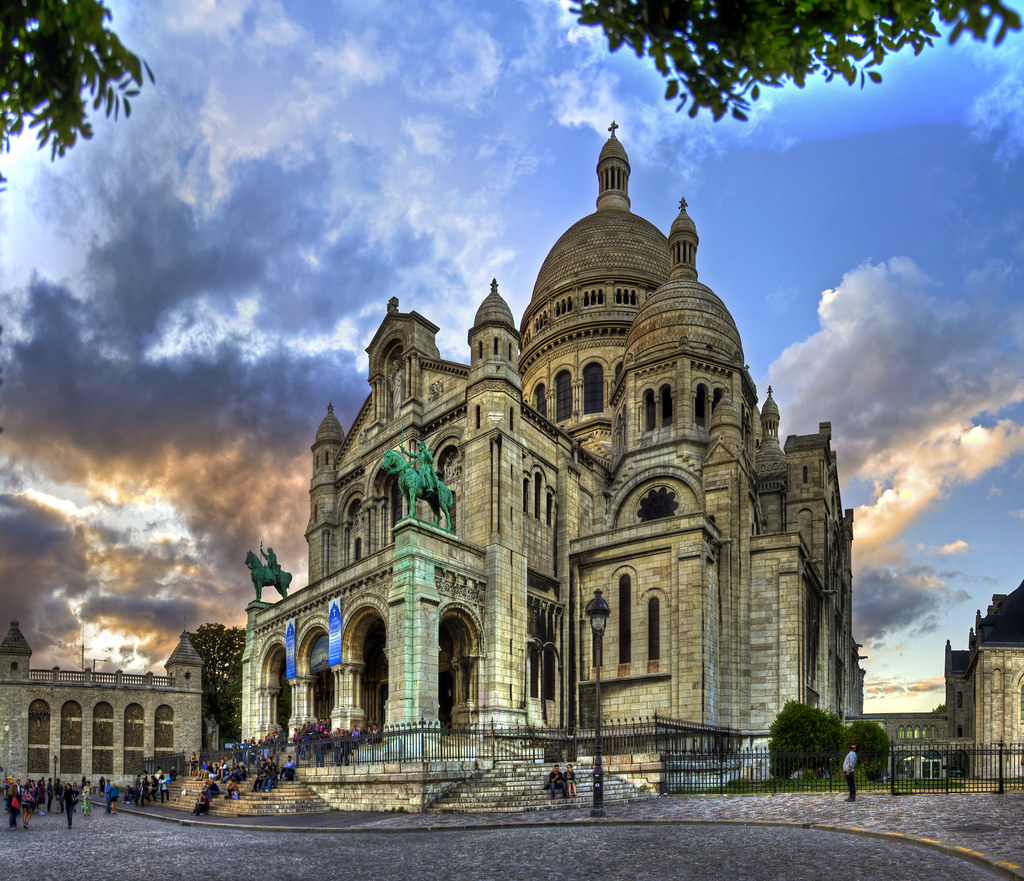The Sacré-Cœur Basilica, a beacon of pristine white stone perched atop Montmartre, is one of Paris’s most iconic landmarks. Its distinctive Romanesque-Byzantine architecture, visible from nearly every corner of the city, draws millions of visitors each year. While the basilica itself is a testament to faith, art, and history, the story of Sacré-Cœur is intertwined with a more recent phenomenon: the attaching of "love locks" to its surrounding fences.
A Monument of Penance and Pilgrimage
The Sacré-Cœur Basilica’s origins are rooted in a turbulent period of French history. Following the Franco-Prussian War of 1870-1871 and the subsequent Paris Commune, a vow was made to construct a church dedicated to the Sacred Heart of Jesus. This act was intended as an expiation for the perceived moral failings of the nation, and a plea for divine intervention to restore peace and order.
The project was approved by the National Assembly in 1873, and construction began in 1875 under the direction of architect Paul Abadie. Abadie’s design drew inspiration from Romanesque and Byzantine styles, a departure from the Gothic architecture that dominated many of France’s cathedrals. The basilica’s brilliant white color is due to the travertine stone quarried from Château-Landon, which hardens and bleaches with age, ensuring the Sacré-Cœur remains a luminous presence on the Parisian skyline.
The construction of the basilica was a monumental undertaking, spanning nearly four decades. Abadie died shortly after the project began, and several architects succeeded him, each contributing to the final design. The Sacré-Cœur was finally consecrated in 1919, marking the end of World War I and fulfilling the vow made decades earlier.
Architectural and Artistic Marvels
The Sacré-Cœur Basilica is a masterpiece of architectural and artistic detail. Its four domes, including the prominent central dome, create a sense of grandeur and spiritual elevation. The interior is equally impressive, adorned with intricate mosaics, stained glass windows, and sculptures.
One of the basilica’s most striking features is the mosaic above the altar, depicting Christ with outstretched arms, symbolizing divine love and compassion. The stained glass windows cast a kaleidoscope of colors across the interior, creating a serene and contemplative atmosphere. The basilica’s crypt, located beneath the main floor, houses the tombs of several notable figures, including Cardinal Guibert, the Archbishop of Paris who initiated the project.
The Rise of Love Locks
In the early 2000s, a new tradition began to take hold at the Sacré-Cœur Basilica: the attaching of "love locks" to the fences surrounding the basilica. This practice, which originated in other parts of Europe, involved couples writing their names or initials on a padlock, attaching it to a public structure, and then throwing away the key, symbolizing their unbreakable love.
The fences around the Sacré-Cœur quickly became a popular spot for couples to express their affection. Locks of all shapes, sizes, and colors adorned the metal barriers, creating a colorful and visually striking display. The locks became a symbol of romance and commitment, drawing tourists and locals alike to witness this unique expression of love.
The Appeal of Love Locks
The allure of love locks lies in their simplicity and symbolism. In a world where relationships can feel fleeting and uncertain, the act of attaching a lock and discarding the key offers a sense of permanence and commitment. The locks become a tangible representation of a couple’s bond, a physical manifestation of their love.
For many couples, attaching a love lock to the Sacré-Cœur Basilica was a romantic gesture, a way to commemorate their relationship in one of the world’s most romantic cities. The basilica’s stunning views of Paris, its spiritual significance, and its reputation as a place of love and devotion made it an ideal location for this symbolic act.
The Controversy and Removal
As the number of love locks grew, so did the concerns about their impact on the basilica and its surroundings. The weight of the locks posed a structural threat to the fences, and the sheer volume of metal detracted from the aesthetic beauty of the site. Moreover, the discarded keys became a source of litter, polluting the environment.
In 2010, the city of Paris began to express concerns about the love locks, citing safety and aesthetic reasons. The locks were deemed a form of vandalism, and authorities began to explore ways to discourage the practice.
Despite efforts to discourage the attaching of locks, the tradition persisted, and the problem only worsened. In 2015, the city of Paris took decisive action, removing the love locks from the fences around the Sacré-Cœur Basilica and other popular locations, such as the Pont des Arts bridge over the Seine. The fences were then replaced with panels designed to prevent the attachment of new locks.
The Legacy of Love Locks
While the love locks are no longer a prominent feature of the Sacré-Cœur Basilica, their legacy remains. The tradition served as a unique expression of love and commitment, and it drew attention to the basilica as a romantic destination.
Today, the city of Paris encourages couples to express their love in alternative ways, such as taking photos, writing letters, or making donations to charity. These options are more sustainable and less harmful to the environment.
The Sacré-Cœur Today
Today, the Sacré-Cœur Basilica continues to be a major pilgrimage site and tourist attraction. Visitors come to admire its architecture, explore its art, and experience its spiritual atmosphere. The basilica’s dome offers panoramic views of Paris, making it a must-see destination for anyone visiting the city.
The Sacré-Cœur Basilica stands as a symbol of faith, art, and history. While the love locks may no longer adorn its fences, the basilica remains a place of love and devotion, a testament to the enduring power of the human spirit.
Conclusion
The story of the Sacré-Cœur Basilica and the love locks is a complex one, encompassing faith, history, love, and environmental concerns. While the tradition of attaching locks may have faded, the basilica continues to inspire and captivate visitors from around the world. Its architectural beauty, artistic treasures, and spiritual significance make it a truly unforgettable landmark.


